
Mutual Street Arena, initially called Arena Gardens or just the Arena, was an ice hockey arena and sports and entertainment venue in Toronto, Ontario, Canada. From 1912 until 1931, with the opening of Maple Leaf Gardens, it was the premier site of ice hockey in Toronto, being home to teams from the National Hockey Association (NHA), the National Hockey League (NHL), the Ontario Hockey Association (OHA) and the International Hockey League (IHL). It was the first home of the Toronto Maple Leafs, who played at the arena under various names for their first 13½ seasons. The Arena Gardens was the third rink in Canada to feature a mechanically frozen or 'artificial' ice surface, and for eleven years was the only such facility in eastern Canada. In 1923, it was the site of the first radio broadcast of an ice hockey game, the first radio broadcast of an NHL game, and the first broadcast of an ice hockey game by long-time broadcaster Foster Hewitt.

An ice rink is a frozen body of water and/or an artificial sheet of ice where people can ice skate or play winter sports. Ice rinks are also used for exhibitions, contests and ice shows. The growth and increasing popularity of ice skating during the 1800s marked a rise in the deliberate construction of ice rinks in numerous areas of the world.
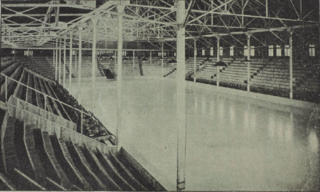
The Montreal Arena, also known as Westmount Arena, was an indoor arena located in Westmount, Quebec, Canada on the corner of St. Catherine Street and Wood Avenue. It was likely one of the first arenas designed expressly for hockey, opening in 1898. It was the primary site of amateur and professional ice hockey in Montreal until 1918.

The Duquesne Gardens was the main sports arena located in Pittsburgh, Pennsylvania, during the first half of the 20th century. Built in 1890, the building originally served as a trolley barn, before becoming a multi-purpose arena. The Gardens opened three years after a fire destroyed the city's prior sports arena, the Schenley Park Casino, in 1896. Over the years, the Gardens was the home arena of several of Pittsburgh's historic sports teams, such as ice hockey's Pittsburgh Pirates and Pittsburgh Hornets. The Western Pennsylvania Hockey League, which was the first ice hockey league to openly hire and trade players, played all of its games at the Gardens. The arena was also the first hockey rink to ever use glass above the dasher boards. Developed locally by the Pittsburgh Plate Glass Company, Herculite glass was first tested in Pittsburgh. Most rinks were using wire mesh before the shatterproof glass was invented. Finally, the Pittsburgh Ironmen, a charter member of the Basketball Association of America, played at the Gardens from 1946 to 1947.
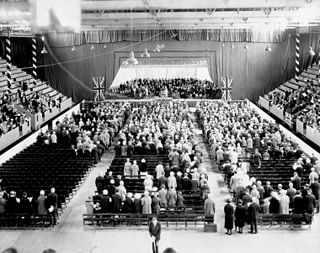
The Ottawa Auditorium was a 7,500-seat arena located in Ottawa, Ontario. It was located in Downtown Ottawa at the corner of O'Connor and Argyle Streets, today the site of the Taggart Family YMCA. Built primarily for ice hockey, the arena was also used for sports events, assemblies and musical concerts.

The William G. Mennen Sports Arena, commonly referred to as Mennen Arena, is a multi-purpose arena in Morris Township, New Jersey primarily used for ice hockey and other skating activities. The building houses three regulation-sized ice rinks. The main rink has seating for 2,500 spectators.

The Victoria Skating Rink was an indoor ice skating rink located in Montreal, Quebec, Canada. Opened in 1862, it was described at the start of the twentieth century to be "one of the finest covered rinks in the world". The building was used during winter seasons for pleasure skating, ice hockey and skating sports on a natural ice rink. In summer months, the building was used for various events, including musical performances and horticultural shows. It was the first building in Canada to be electrified.
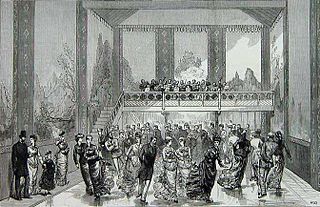
The Glaciarium was the world's first mechanically frozen ice rink and was located in London, England. An item in the 8 June 1844 issue of Littell's Living Age headed "The Glaciarium" reported:
This establishment, which has been removed to Grafton street East' Tottenham-court-road [sic], was opened on Monday afternoon. The area of artificial ice is extremely convenient for such as may be desirous of engaging in the graceful and manly pastime of skating.

Sparta Amfi is an indoor ice hockey rink located in Sarpsborg, Norway. The 3,900-spectator venue is the home of Sparta Sarpsborg and Sarpsborg Skøyteklubb. The arena opened in 1963 as the first indoor ice rink in Norway. Major upgrades were carried out in 2006 and 2012, and a second rink opened in 2007.
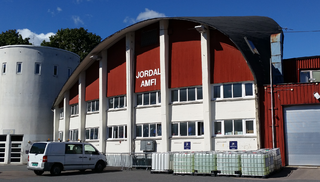
Jordal Amfi was an indoor ice hockey rink in Oslo, Norway, the first bearing that name. The venue opened in 1951 to host the 1952 Winter Olympics. Jordal was also the site of the 1958 and the 1999 IIHF World Championship. It would in the following decades also serve several boxing matches and concerts.

The Schenley Park Casino was Pittsburgh’s first multi-purpose arena. The facility was considered the envy of the sports and entertainment world during the early 1890s, with amenities that were unsurpassed anywhere on the globe. It was built at the entrance to Schenley Park in Oakland near the Phipps Conservatory, the Schenley Bridge and the Carnegie Library of Pittsburgh. The University of Pittsburgh’s Frick Fine Arts Building currently sits on the site of the casino. The casino was the first place in Pittsburgh where organized ice hockey was played. The arena's artificial ice surface was the first of its kind in North America.
The Victorian Ice Hockey Association, currently trading as Ice Hockey Victoria is the governing body of ice hockey in Victoria, Australia. The Victorian Ice Hockey Association is a branch of Ice Hockey Australia.

The Baluan Sholak Sports Palace or Bolyan Sholak Sports Palace is a Palace of Sports in Almaty, the former capital of Kazakhstan. It was built in 1967 and extensively renovated in 2009–2011. It is named after Baluan Sholak, a celebrated Kazakh composer, singer, poet, dombra player, dzhigit and wrestler.
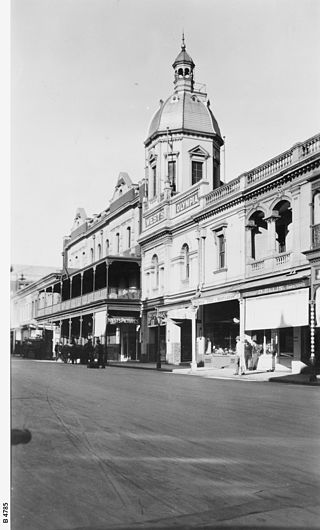
The Adelaide Glaciarium, located at 89–91 Hindley Street in the city of Adelaide, South Australia, was the first indoor ice-skating facility built in Australia. It is also the location of the first "hockey on the ice" match in the country, which was an adaptation of roller polo for the ice using ice skates. Contemporary ice hockey was never played at this venue but this ice skating rink, the country's first, provided the "test bed" facility for its successor, the Melbourne Glaciarium, the birthplace of ice hockey in Australia.

The Melbourne Glaciarium opened in 1906, the second indoor ice skating facility built in Australia after the Adelaide Glaciarium. The Glaci hosted the first game of ice hockey played in Australia and was the home of the first ice hockey association in Australia. At the time the Melbourne Glaciarium was opened, it was the 3rd largest indoor ice rink in the world. The rink closed in 1957 and was soon demolished.
The Sydney Glaciarium was the third indoor ice skating facility built in Australia and the first indoor ice skating rink built in New South Wales, located in Ultimo, New South Wales.

The North Avenue Ice Palace in Baltimore, Maryland, United States was one of the first examples of an indoor artificial ice rink in North America. It was located on North Avenue between Charles Street and Lovegrove Alley and extended north to 20th Street. It was constructed by the Arctic Skating Company, managed by Gerald T. Hopkins, Jr. The ice rink was used for pleasure skating and ice sports, including early games of ice hockey.

The Clermont Avenue Skating Rink was a sports arena on Clermont Avenue in Brooklyn, New York, United States. It was home to the Brooklyn Skating Club and the Brooklyn Crescents of the American Amateur Hockey League from 1896 to 1906.
The United States National Hockey League was an amateur ice hockey league that operated in Boston, New York City and Pittsburgh for one season in early 1918.


















